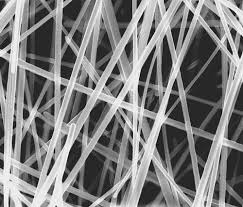Superconductivity of Nanoparticles in the Structure of Nanowires (Electrical-Electronics) PhD
Researcher and author: PhD student Afshin Rashid
Note: Silicon nanowires are one of the best examples of semiconductor nanostructures that can be made in single crystals with a small diameter of 9 to 0 nanometers.
Electromagnetic nature of nanoparticles Electromagnetic properties in magnetic materials, molecules and atoms that make them. Simply put, elements such as iron, cobalt, nickel and their alloys are absorbed by the magnet . It is called magnetic material. The classification of electromagnetic materials is based on magnetic susceptibility (the ability of a material to become magnetic). Based on this, materials are classified into three groups: ferromagnetic, paramagnetic and diamagnetic. The result of bipolar moment in electromagnetic diamagnetic materials is zero and in the presence of a magnetic field, bipolar moment is induced in them; But for these two poles The induction is in the opposite direction of the external magnetic field, which causes a substance (diamagnetic) to be expelled from the magnetic field. By removing the external magnetic field, the magnetic properties of these materials do not remain. The magnetic susceptibility of these materials is very low (around 6-10 -3-10). All gases (except oxygen) are water, silver, gold, copper, diamonds, graphite, bismuth, and many organic compounds ( diamagnets). The magnetic dipoles in the paramagnetic material do not have a definite and regular orientation; As a result, these materials have no magnetic properties. If they are placed inside a magnetic field, they are aligned along the lines of the magnetic field. With the removal of the magnetic field , the magnetic dipoles quickly return to their previous state in the absence of the field. In this way, paramagnetic materials acquire strong magnetic properties in nano-electromagnetic fields.
Nanowires have a structure that has an amazing length-to-width ratio . Nanowires are very thin - it is possible to create nanowires with a diameter of only one nanometer, nanowires are used to create the smallest transistor (nanotransistors). Nano wire Nano wire can have insulating, semiconductor or metal properties . Insulators do not withstand electrical charges, while metals have very good electrical charges. The semiconductors are located between the two and are charged under suitable conditions. By placing the semiconductor wires in the proper configuration, transistors can be made that act either as switches or amplifiers .Some interesting and anti-flexible features of nanowires are due to their small scale.
Conclusion:
Nanowires are just like ordinary electrical wires except that they are very small. Like conventional wires, nanowires can be made from a variety of conductive and semiconductor materials such as copper, silver, gold, iron, silicon, zinc oxide and germanium. Nanowires can also be made from carbon nanotubes.
Author: PhD student ( Afshin Rashid)
PhD student in nano-microelectronics at Islamic Azad University, Science and Research Branch, Tehran




